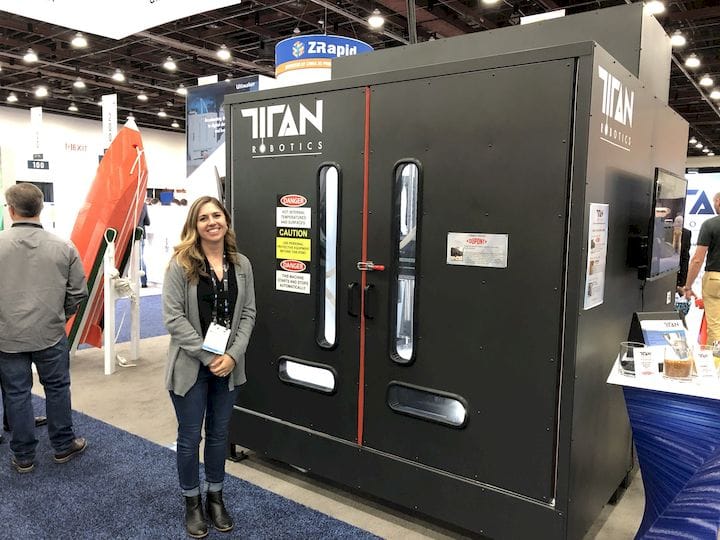![A large-format 3D printer from Titan Robotics, with co-Founder Maddie Guillory for scale [Source: Fabbaloo]](https://fabbaloo.com/wp-content/uploads/2020/05/image-asset_img_5eb0922886921.jpg)
During an acquisition of a 3D printer one thing is always done: a detailed inspection of machine specification sheets.
These are typically one-pagers that list the key characteristics of the machine, including specifications for the machine’s build volume, maximum temperature, floor weight, electrical requirements and much more. The factors included vary somewhat between vendor presentations, but generally you can obtain a pretty decent understanding of the device by reading them.
3D Printer Specifications
Of course, these specifications exist because that’s what is being built by the manufacturer: the production lines making the devices are set up to ensure machines with those specs are produced. You know exactly what you are buying.
Or are you? What if you need something slightly different?
You could dismiss that vendor and choose another that has the specification you require, but in reality that usually introduces other compromises. Maybe the build volume is bigger, but the other machine doesn’t have the right kind of build surface for your material.
You can’t always get what you want.
Custom 3D Printer Builds
There’s one way to get around this that you might not be aware of. Some 3D printer manufacturers can do custom builds for customers. In this scenario, the manufacturer changes one or more specifications in one of their models to suit the buyer.
Of course, this will cost more, but if it is truly required and financially justifiable, it could be the right way forward for many buyers.
Certainly there is not a free hand; manufacturers are only able to tweak machine designs slightly. The most typical altered specification is the build volume.
In order to, say, increase the build volume, a machine’s motion gantry has to be stretched. This would require longer metal parts, longer belts in some cases and similar mechanical changes. As long as the overall performance of the machine remains good, it’s technically possible to do so.
Other typical changes might be to use a different hot end or extruder, as the use of some materials is dependent on those components.
Does every company offer this type of service? By no means! My observation is that it tends to depend on the price of the machine.
Which Companies Build 3D Printers My Specifications?
A good rule of thumb is that the lower the price of the machine, the less probable it is the manufacturer will alter the specifications for you. That said, I am sure enough money could convince most any company to do most anything, but we’re staying realistic here.
As the price of a machine increases, there is more flexibility to alter specifications. This is usually seen in the large-format 3D printers, which are sometimes explicitly offered with the ability to choose the build volume.
In fact, since the largest machines are often built-to-order — that is, they are not built until someone actually orders one — there is plenty of opportunity for customization. I suspect many of the largest devices are built precisely to the specifications of the customer.
However, another factor is process complexity. Some machines, particularly the powder bed laser metal 3D printers, are less likely to be modified due to the complexity of the printing process. For these machines the 3D printing activity must take place in an air-sealed chamber evacuated of oxygen, lest fires or explosions occur.
Altering the dimensions of a carefully designed sealed chamber is likely not something a manufacturer would care to do, as it could upset the finely tuned thermal flows within the chamber, resulting in poorer quality parts.
Custom 3D Printer Requests
That said, if you are not satisfied with the specifications of a machine, by all means enquire with the vendor as to whether they would consider altering one or more machine properties for you as a custom product.
You might be surprised at their answer.











No one seems to offer collaborative 3D printing modes on dual extrusion devices. We explain why this is the case.